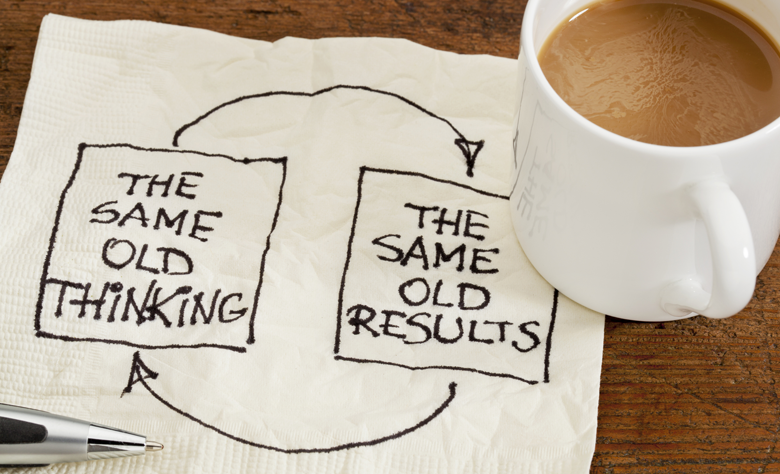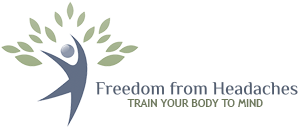Headache Type Doesn't Matter...
 Chapter 4 gave you insight into muscle physiology and the myofascial syndrome. We’ve shared that it’s a persistent over-active stress response that compromises muscles of the head, neck, jaw and shoulders. The dysfunction of your muscles become habits outside of your awareness. On top of that, these changes are locked in to your muscles due to the myofascial syndrome.
Chapter 4 gave you insight into muscle physiology and the myofascial syndrome. We’ve shared that it’s a persistent over-active stress response that compromises muscles of the head, neck, jaw and shoulders. The dysfunction of your muscles become habits outside of your awareness. On top of that, these changes are locked in to your muscles due to the myofascial syndrome.
Okay, that’s a lot to take in. All this talk about muscles is vital to understand the cascade of events leading to chronic, severe, headaches.
But as complex this scenario is, it is hopeful and what everyone has been looking for…a cause of chronic headaches and a way to reverse what has caused them.
This power is in your hands and if you have followed along in this story, can you start to see your path to headache prevention?
By now you may be thinking, “this information is great but what about my headache type?“
You may or may not have a clear idea about which type of headaches you experience but it is common to be confused. Unsure about what kind of headaches you have? You are not alone, we have seen severe tension headaches diagnosed as migraines and muscle tension and migraine headaches diagnosed as sinus headaches.
But, beyond any confusion you may have about your headache type, we want to address common questions asked about how a natural headache behavioral intervention works for most of headaches other than these atypical headache types: cluster and post-concussive headaches are not usually helped by behavioral training.
Sinus headaches can be helped because in our experience, it is not unusual to be diagnosed as having sinus headache when in reality you have tension headaches or migraines.
Migraine Headaches
Migraines are vascular headaches characterized by severe pain, often involving only one side of the head. They occur when the blood vessels in the brain and head dilate (vasodilation) or open up after first being constricted (vasoconstriction).This is what causes the throbbing sensation often reported during a migraine. This pre-headache constriction is as much a part of the problem as the dilation that causes the headache. You can feel the dilation happening because it hurts. A migraine is often triggered by a sudden dilation of constricted blood vessels.
Activation of the stress response causes constrictions of the blood vessels. So, if you work hard or are under stress for any length of time and have constricted blood vessels, what do you think happens when you relax? Right, your blood vessels dilate and it looks like your headache is triggered by the relaxing event such as vacations, relaxing on the weekend, or relaxing after a hot tub or even sex. As you can see, the naming a type of headache after the triggering event is only part of the story, e.g. vacation headaches, sex headaches, weekend headaches. Wine or alcohol will often trigger a migraine for this same reason, and it is why drinking coffee or caffeine will often abort a migraine. The caffeine in coffee contracts the over dilated blood vessels and this is why Imitrex can stop a migraine, it causes vasoconstriction. Some factors in red wines and aged cheeses can also trigger migraines as well as strong emotions, such as intense anger.
Putting the knowledge into action is what gives you the effective way to intervene before you get a headache, you can avoid the initial vasoconstriction by managing the stress response so you can prevent the initial vasoconstriction.
But, unfortunately there is a second major trigger of migraines, muscle tension. In addition to causing constriction of the blood vessels, muscular tension itself can cause a muscle tension headache that can act as a ‘detonator’ for migraines, setting off the explosive BOOM of a migraine.
.In our experience, if you have migraine headache more than once a month there is a muscle tension component in addition to the vascular component setting off your migraines.
Tension Headaches
Muscle tension headaches generally starting in the muscles of the head and neck. Long held tension in these muscles results in shortening of muscle fibers, and while holding abnormal tension they become easily fatigued causing the headache. Tension headache pain can be mild or severe and these headaches often occur daily or even several times a day. Nobody really understands the exact mechanism and muscle fatigue is painful. If you doubt this, hold one arm out in front of you for 10 minutes without putting it down. You will find that your deltoid or even your trapezius muscles will start to hurt.
Of course, when you put your arm down the pain goes away and this type of muscular fatigue is thought to play a part in causing tension headaches. Again, frequency is the key. Having tension headaches more than once a month makes you a great candidate for a behavioral intervention since these muscles will be unable to relax until the fascia is stretched out.
Mixed Migraine and Tension Headaches
This headache pattern shares characteristics of both migraine and tension headaches. People with this pattern know they have two types of headaches. By managing the stress response to promote a more relaxed nervous system and reducing muscle tension a Biofeedback based behavioral training teaches you how to identify and change behaviors that create both the muscular tension and the vascular changes that result in headache. The interaction how your body responds to stress is complex but the solution is simple and more headaches you have, the better our training works!
Rebound Headache
The first characteristic alerting you to the possibility your headaches are rebound headaches is you have headaches daily, often in the morning. Daily or almost daily headaches are most often due to rebound. That pattern, coupled with daily or almost daily use of analgesic medicines or caffeine help define rebound headache. And, rebound headaches typically occur in people who also have a history of migraine. Doctors used to tell people with arthritis to take 10 aspirin a day and they didn’t get rebound headaches. People with migraines who take 10 aspirin a day will usually get rebound headaches. There seems to be a difference in the brain chemistry people with migraines. Analgesics are handled differently in their nervous systems. The critical question again is frequency.
TemporoMandibular Disorder (TMD
It is not unusual for TemporoMandibular Disorder problems to also be present for many headache sufferers. One of the most frequent causes and exacerbating factors in TMD is bruxing or clenching your teeth. Simply put, this causes wear and tear on your jaw joint, often stretching the ligaments that keep a little disk in your jaw in place, causing misalignment and pain. If you have TMD problems, you must stop clenching your teeth both during the day and at night.
When you stop clenching the joint, it can heal and functionality will return to normal instead of splint therapy and even surgery to correct damage to the joint. However, if your clenching habit is not stopped, these invasive measures are unlikely to be successful. The biggest problem is that you may not think you have a habit of clenching your teeth…just because you don’t THINK you clench doesn’t mean you don’t do it!
Your partner might complain of hearing you grind your teeth at night and your daytime habit of clenching may go unnoticed. Or your dentist may have noticed excessive tooth wear or even cracked or broken teeth. Giving you a splint to protect your teeth does not stop the habit of clenching and continued headaches. It is only common sense that if you have a habit of clenching you can create a new habit of NOT clenching. It just takes awareness and a certain type of practice!
Caffeine Withdrawal Headache
Caffeine causes the blood vessels of the body to constrict, this is one reason you probably have been warned to stay away from coffee. This is also the reason Excedrin includes caffeine in its formula.
A little constriction of the blood vessels along with the pain killing effect of the medication is useful in returning the blood vessels to normal. So, if you regularly drink coffee and stop, you will get a dilation of the blood vessels of your brain and head that causes a caffeine withdrawal headache.
The good news about headache types is not so much about what kind of headache you have but how often you have it. Frequency is the key. Frequent headaches lend themselves best to a behavioral approach.
So What Do You Do About It?
As you can see, saying the muscles of your jaw, face, neck and shoulders are a little more complicated than you might at first imagine. All this has to be reversed and depending upon how long you have had your headaches it can take some time. Fascia certainly changes faster than ligaments but slower than muscles.
And, if you get confused about whether you are relaxing or tightening you can get quite confused indeed and also discouraged. But, if you persist in learning how to relax and stretch out the muscles back to normal and learn exactly how to keep them that way, you will see dramatic and permanent reductions in the severity and frequency of your headaches.
This overlap between an overactive stress response causing muscle tension which causes tension headaches as well as vasoconstriction leading to vasodilation for migraine headache sufferers is why a behavioral approach to managing headaches works.
It involves shifting the nervous system from the stress response causing muscular tension and vasoconstriction to the relaxation response which causes muscular relaxation and vasodilation. It is the ‘treatment’ for eliminating all the types of headaches discussed here.
The stress response is the common cause that also interacts with any genetic vulnerabilities.
When you have a family history of migraine headaches you are likely to be susceptible to both the muscle tension effects of stress and the vascular effects of stress. If you don’t have a genetic sensitivity to migraine the stress response can result in tension headaches or TemporoMandibular jaw joint problems.
So you see. The type of headaches doesn’t matter.
The Headache Free Formula works on all of the them because the causes are the same. Find the cause, reverse it and and voilà your headaches are a thing of the past. Now you know the why and how it works, we will be introducing you to what to do.
